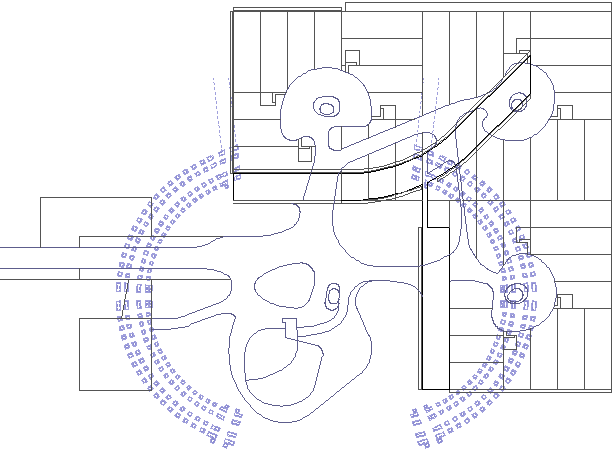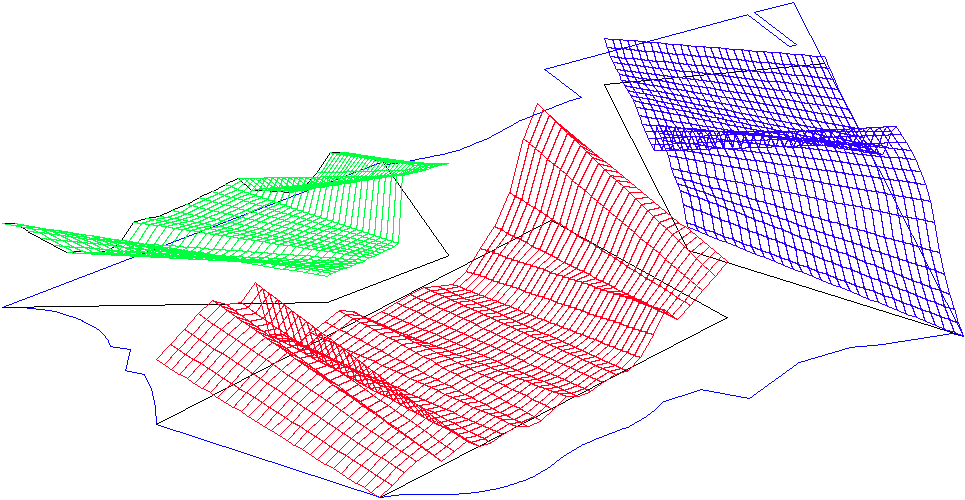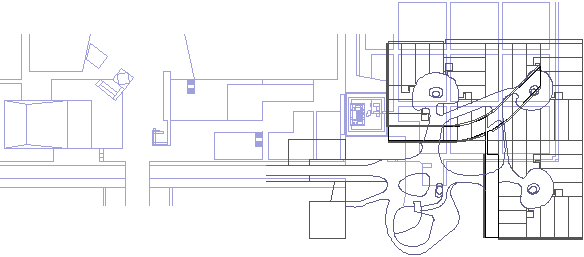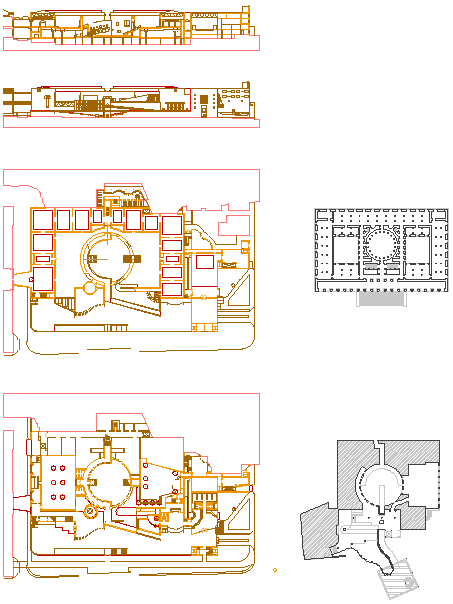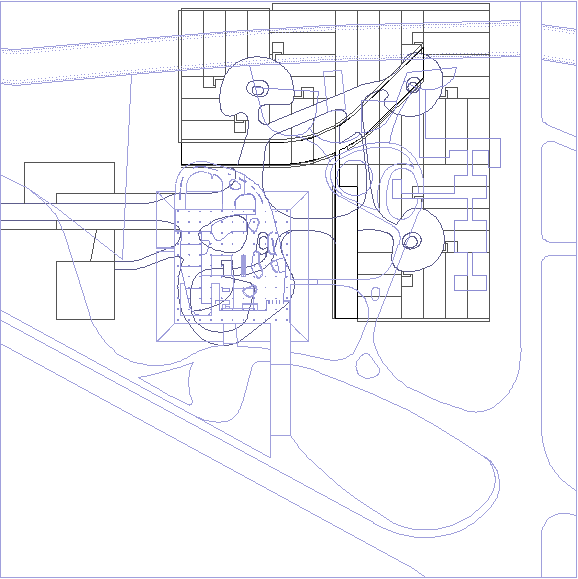Quondamopolis | trafficking in architecture |
|
12 June |
| 2013.06.12 17:07 |
|
2009: "All the world's a next stage."
1999: My CAD work, or at least my 'expanding, stretching, compacting, morphing, collage (citying), schizo-analyzing' CAD work is a manifestation of the new dexterity engendered by the capabilities of CAD specifically and digital media in general. In simple terms, my unorthodox manipulation of CAD data reflects the many new ways of "drawing" that CAD allows. On a "theoretical" level, my manipulation(s) present new drawing/designing paradigms that for the most part did not exist before CAD/digital media.
|
|
|
|
|
however, because the slice of the body that corresponds to the year 2000 is right at that elevation where the bottom-most tips of the rib cage become part of the 'plane of the present.' This is significant mainly because there has not been a skeletal presence along the body's periphery since the presence of the crest of the hipbones c. 1500. The 'plane of the present' is now rising above that portion of the body where expansion most readily occurs, and thus humanity (whether it knows it or not) is now in a state where human civilization's grossest era of unrestrained expansion is now steadily coming to an end as an all-encompassing (protective) structural 'network' begins to take place (in the present).
|
|
|
|
|
also published within Lotus, this time Lotus International 24 (1979). I personally remember this essay as something I really connected with, something that I really liked the idea of, but I don't think I've (re)read the essay in many years. Of course, I reread "Architecture of the Collective Memory--The infinite catalogue of urban forms" last night, and wow, it like blew me away because what Ungers relates is exactly how I've come to see Piranesi's Ichnographia Campus Martius, that is, as a whole city of architecture of collective memory, indeed an infinite catalogue of urban forms (e.g. 3123h, 3123i, 3123j, 3123k). Interestingly, such a view of the Ichnographia Campus Martius is what Aureli (and Eisenman) do not (want [you] to) see the Ichnographia Campus Martius as.
|
|
|
|
|
on the Havellandshaft, which is how Ungers ends "Architecture of the Collective Memory," yet Aureli nowhere mentions the "collective memory" aspect of the Havellandshaft (nor does Aureli footnote reference "Architecture of the Collective Memory--The infinite catalogue of urban forms" in Lotus International 24).
|
|
|
|
|
"At this point Kublai Khan interrupted him or imagined interrupting him, or Marco Polo imagined himself interrupted, with a question such as: 'You advance always with your head turned back?' or 'Is what you see always behind you?' or rather 'Does your journey take place only in the past?'"
|
|
|
|
|
"Could Piranesi be weaving some complicated message which refers to both the reigns of Elagabalus and Alexander, where Alexander successfully undid the corruption of Elagabalus and began to turn Rome toward a more Christian and morally sound city and empire?
|
|
www.quondam.com/33/3303o.htm | Quondam © 2017.11.19 |
